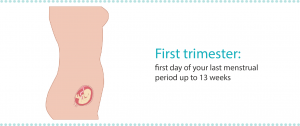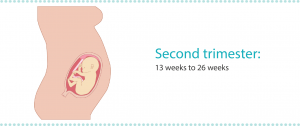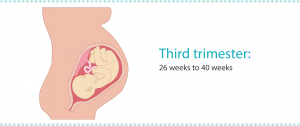Reproduction & Pregnancy
Kids are curious! One of the biggest mysteries when they’re young is where babies come from and how they’re made. As your child gets older, the conversations will shift to talking about pregnancy. Here are some ideas for talking to your child about reproduction and pregnancy.
Talking to Your Young Child
One common question young kids have is “Where do babies come from?” This question is a great chance to talk to your child about how reproduction happens.
Try to keep the wording simple for your young child while still using the correct names for body parts. For example, a 3-year-old may be satisfied with “Babies grow in a special place in the body called a uterus.” However, a 6-year-old may have more questions about how the baby grows or how it’ll come out. You could say, “A baby grows in the uterus and is born through the vagina.”
Talking to Your Child and Teen
It helps to feel comfortable and confident when talking about pregnancy with your child. If you check out the link to How Pregnancy Occurs, you’ll find what you need to feel more prepared.
Stages of Fetal Development
This is a time of rapid growth and change. From 0-8 weeks of the pregnancy, the embryo is growing in the uterus. After week 8, it’s called a fetus until it’s born. By six weeks of pregnancy, nerve cells (neurons) start to form. By the end of the first trimester, all the organs are formed and working. By 16 weeks, the fetus grows 250,000 neurons every minute. Visit Healthy Parents, Healthy Children to learn more about the first trimester.

The rapid growth continues during these weeks. By the end of the 2nd trimester, a fetus will be about 32 cm long and weigh around 1 kg or as much as a small melon. The fetus starts to move around during this time. It now has fingerprints and toeprints. During the 2nd trimester until about 24 weeks, the fetus can’t live outside of the uterus. Their lungs, heart and blood systems are just not developed enough. Visit Healthy Parents, Healthy Children to learn more about the second trimester.

During these weeks, the fetus will move a lot more. Their eyes will open. They now have eyelashes and eyebrows. They can also sense light and sound. By 40 weeks (when most babies are born), the fetus will be about 55 cm (20 inches) long and weigh 2.7 to 4 kg (6-9 lbs.). Visit Healthy Parents, Healthy Children to learn more about the third trimester.

Make sure your child knows your family values and beliefs around sexual activity and pregnancy. It’s important to stress that both partners are responsible for their own body and their actions, including using birth control and practicing safer sex. Follow the links to learn more about safer sex practices, STIs and birth control methods to help you give your child the facts they need to make healthy decisions now and in the future.
